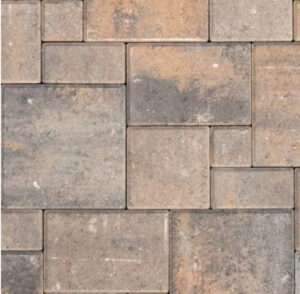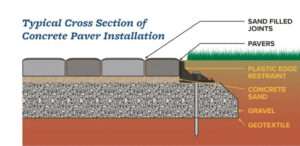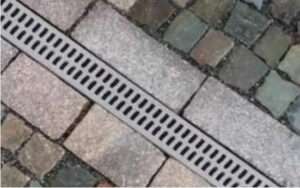Q: A storm in January destroyed the brick patio at our beachfront property in New Hampshire. Looking for advice on environmentally appropriate, durable patio materials. Wondering if brick is the best material as it is easy to repair and if we should just fix it. — G.M.
A: Salt water (assuming you are on the ocean), is a harsh environment for most building materials. If you are on the waterfront, then your patio will be subject to salt spray in the air. If you’re trying to build a patio that will survive moderate flooding, you would need the help of a coastal construction expert.
Brick Pavers. For a typical patio, you have many choices of materials. Which you should choose depends on aesthetics, how much maintenance you are willing to do, your use of the space, and cost. In most cases, you will want a relatively flat surface with enough texture for good footing in wet conditions.
In general, brick is considered environmentally friendly and holds up fairly well in coastal environments. However, you need to consider the specific type of brick, the level of exposure to salt water, and whether the brick is subjected to freeze/thaw cycles. If salt water penetrates the brick surface you may get efflorescence, and spalling. Freeze-thaw cycles of wet brick will increase any spalling. Use sand between the bricks, not mortar, which will erode from contact with salt water.
Concrete & Stone Pavers. Concrete pavers are less expensive, very durable, and are generally a good choice for coastal areas. They come in a wide variety of shapes, sizes and surfaces. Interlocking pavers can provide a very durable surface. Most concrete pavers are designed for use without mortar, and joints are typically filled with sand.

Travertine and other types of stone also make excellent patio surfaces. They are naturally resistant to weather, salt, and freeze-thaw cycles.
Base for Pavers
If you choose any type of masonry or stone pavers, the base preparation is the most important component in terms of durability. In general, you want to start with a heavy-duty landscape fabric, followed by 4-6 inches of well-compacted gravel topped by 1 to 1 ½ inches of washed concrete sand. Rake the sand level and set the pavers. Between the pavers, use either the same sand or polymeric sand if you want to minimize weed growth.

Around the edge, it is important to use some type of edge restraints if you want to pavers to look good a few years down the road. There are many options, including special edge pavers made for that purpose.
Metal or PVC edge restraints are generally held in place by long spikes driven every 8 inches or so. Some “low-profile” designs are barely visible. Other approaches include pressure treated timbers. Another older approach is the build a curb from concrete, which can be troweled or formed.
In situations where you cannot get a stable base due to poor soil conditions, you can pour a 4-6 inch concrete slab (with reinforcement as needed) and set the pavers on top either on a bed of sand or mortared to the slab. .
Drainage
Whatever material you choose for your patio, make sure the top surface is sloped for drainage. Depending on the material and site characteristics a slope of 1/4-inch per foot is usually recommended. A slope of 1/8 inch per foot is acceptable where some pooling of water is acceptable and the surface is not subjected to freezing.
For large patios, it makes sense to incorporate drainage into the design. That might mean adding manufactured channel drains every 4 to 8 feet or leaving drainage channels filled with crushed stone. The drains should be sloped and drain to a suitable area. For flat sites, drainage to a drywell is often the best alternative.

Decking
Where a little elevation in the walking surface needed, consider building a low deck rather than a patio at grade. Make sure all the materials are rated for ground contact. Choose decking that is suitable for installation just above grade, and for intermittent submersion in water if that is likely.
In most climates, Installing a deck close to grade means a lot of exposure to moisture, especially on the framing and bottom of the decking.
For success you need a premium decking material suited for the application. Materials rated for water contact, and often sold for use around pools, would be a good place to start.
Unfortunately pressure-treated wood rated for use with salt or brackish water uses CCA, which is no longer sold for residential use. For ground and fresh water contact, you can use wood rated UC4A or UC4B (which can tolerate limited salt water contact. Companies that specialize in docks and pool surrounds are a good source of information.
Other options include tropical hardwoods, such as ipe and garapa, and expanded PVC decking (such as Azek), which contains no wood pulp or fibers. A new version of PVC decking is capped with ASA, an expensive material used for car dashboards. The manufacturer claims ASA outperforms other capstock material in durability, color retention, and water resistance. As for wood-composite decking, it is risky to lay it close to the ground due to the high moisture levels. –– Steve Bliss, Editor, BuildingAdvisor.com
Leave a Reply